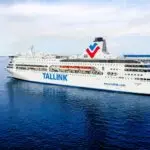- Jet hull loss (A hull loss is an accident in which the aircraft is destroyed or substantially damaged and is not subsequently repaired for whatever reason including a financial decision of the owner) rates by region of operator (per millions departures)
| Region |
2017 |
2012 – 2016 |
| Africa |
0.00 |
2.21 |
| Asia Pacific |
0.18 |
0.48 |
| Commonwealth of Independent States (CIS) |
0.92 |
1.17 |
| Europe |
0.13 |
0.14 |
| Latin America and the Caribbean |
0.41 |
0.53 |
| Middle East and North Africa |
0.00 |
0.74 |
| North America |
0.00 |
0.22 |
| North Asia |
0.00 |
0.00 |
The world turboprop hull loss rate was 1.30 per million flights, which was a deterioration from 1.01 in 2016 but an improvement over the five-year rate (2012-2016) of 2.18. All regions saw their turboprop safety performance improve in 2017 when compared to their respective five-year rates. Notwithstanding this, accidents involving turboprop aircraft represented 44% of all accidents in 2017 and 83% of fatal accidents.
Turboprop hull loss rates by region of operator (per million departures)
| Region |
2017 |
2012 – 2016 |
| Africa |
5.70 |
7.38 |
| Asia Pacific |
0.61 |
1.45 |
| Commonwealth of Independent States (CIS) |
16.44 |
20.59 |
| Europe |
0.00 |
0.73 |
| Latin America and the Caribbean |
0.00 |
1.55 |
| Middle East and North Africa |
0.00 |
3.42 |
| North America |
0.94 |
0.98 |
| North Asia |
0.00 |
8.73 |
Progress in Africa
Sub-Saharan Africa continued to make strong progress on safety. Airlines in the region had zero jet hull losses and zero fatal accidents involving jets or turboprops for a second consecutive year. Both the turboprop hull loss rate and the all accident rates declined against the average of the previous five years. However, the turboprop hull loss rate increased compared to 2016 (5.70 vs. 1.52). In turn, this largely was responsible for causing an increase in the all accident rate compared to 2016 (6.87 vs. 2.43).
“Airlines in Sub-Saharan Africa continued to improve their safety performance. The goal is to achieve world-class safety. For a second year in a row, airlines in the region experienced no passenger fatalities and no jet hull losses. But there is still a large gap to cover in the safety performance of the continent’s turboprop fleet. Global standards such as the IATA Operational Safety Audit (IOSA) are making a difference. Counting all accidents, the performance of African airlines on the IOSA registry was more than three times better than non-IOSA airlines in the region. That’s why we continue to encourage African nations to incorporate IOSA and the IATA Standard Safety Assessment (ISSA) into their safety oversight systems. ISSA, which is intended for those carriers that are not eligible for IOSA, also offers a one-term opportunity to operators of aircraft that would otherwise fall under IOSA, enabling an incremental approach to achieving IOSA,” said de Juniac.
In parallel, African governments must accelerate the implementation of ICAO’s safety-related standards and recommended practices (SARPS). As of year-end 2017, only 25 African countries had at least 60% SARPS implementation,” said de Juniac.
IOSA
In 2017, the all accident rate for airlines on the IOSA registry was nearly four times better than that of non-IOSA airlines (0.56 vs. 2.17) and it was nearly three times better over the 2012-16 period. All IATA member airlines are required to maintain their IOSA registration. There are currently 423 airlines on the IOSA Registry of which 142 are non-IATA Members. Over the next few years, IOSA will undergo a digital transformation that will enable IOSA airlines to compare and benchmark their performance. In the long run, the digital transformation will help to focus auditing on areas with the highest level of safety risk.
Notes:
- IATA (International Air Transport Association) represents some 280 airlines comprising 83% of global air traffic.
- IATA defines an accident as an event where ALL of the following criteria are satisfied:
- The aircraft has sustained major structural damage exceeding $1 million US or 10% of the aircraft’s hull reserve value, whichever is lower, or has been declared a hull loss.
- The aircraft is turbine powered and has a certificated Maximum Take-Off Weight (MTOW) of at least 5,700KG (12,540 lbs.).
- Person(s) have boarded the aircraft with the intention of flight (either flight crew or passengers).
- The intention of the flight is limited to normal commercial aviation activities, specifically scheduled/charter passenger or cargo service. Executive jet operations, training, maintenance/test flights are all excluded.
- A hull loss is an accident in which the aircraft is destroyed or substantially damaged and is not subsequently repaired for whatever reason including a financial decision of the owner.
¡Fatality figures and flight numbers provided by Ascend Flightglobal
¡¡ Includes one accident classified as “propeller.”
¡¡¡ Fatality risk measures the exposure of a passenger or crew to a catastrophic accident where all people on board the flight are killed. The calculation of fatality risk does not take into account aircraft size or how many were on board. What is measured is the percentage of those on-board who were killed. This is expressed as fatality risk per millions of flights. The 2017 fatality risk of 0.09 means that on average, a person would have to travel by air every day for 6,033 years before experiencing an accident in which at least one passenger was killed. |












